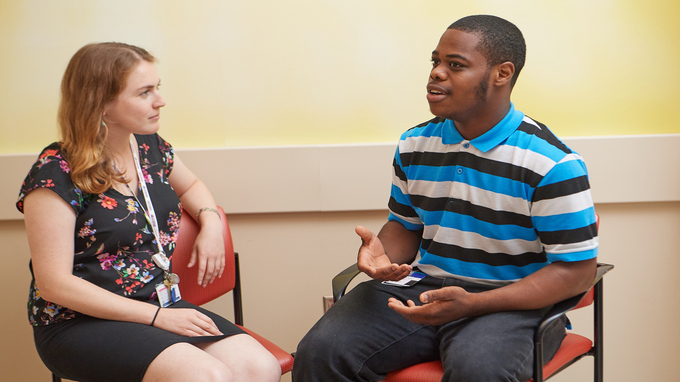Research In Action
Research In Action
Breadcrumb

As a clinical social worker, it is a true privilege and very rewarding to support patients and families through their healing process, but it can be very difficult to bear witness to the pain, suffering, and injustice that also is part of our work. In a fast-paced setting, there is often a lack of time and space to process these difficult experiences and receive support so that the impact of our work does not begin to affect our health or quality of life. In 2015, after experiencing my own difficult secondary traumatic stress (STS) symptoms, I created a trauma-informed organizational group model called the Stress-Less Initiative to prevent and reduce STS.
What is secondary traumatic stress? According to the National Child Traumatic Stress Network, STS is defined as the “emotional stress that a person experiences when they hear about the first-hand traumatic experiences of another person.” Symptoms can mimic those of posttraumatic stress disorder and include re-experiencing (flashbacks, nightmares, or intrusive thoughts), avoidance, hyper-arousal, and changes in mood. Having trouble sleeping, feeling disconnected from friends and family, and avoiding difficult thoughts and feelings about patients are commonly reported by hospital staff. STS increases the risk for negative psychosocial and health outcomes for workers, can negatively impact patient safety and wellbeing, and can strain an organization. For these reasons and to best support employees, prevention strategies should be embedded within the organization to increase utilization by staff, reduce stigma, and support those who may be at most risk.
CHOP’s Stress-Less Initiative
The concept of secondary traumatic stress has been around for decades, but yet, there are few effective organizationally-based interventions to address this issue. As part of CHOP’s Center for Violence Prevention, the Stress-Less Initiative creates a safe space for hospital staff and community providers to address how our work impacts us both personally and professionally while receiving encouragement and support from colleagues.
Because anyone can experience STS, not just clinical professionals on the frontlines, the model engages all disciplines, including physicians, nurses, social workers, child-life specialists, therapists, managers, administrators, security, and research team members. It also recognizes that the shared experiences and support within a team is often an untapped resource. The group model normalizes STS and embeds proactive organizational support for this growing issue, recognizing that secondary trauma is a systematic issue and not due to an individual deficit.
The program consists of a 12-session group model that includes psycho-education, screening, and assessment for STS, learning and reflection activities targeted to increase protective factors (while reducing risk factors), processing of work challenges and rewards, and coping skills to build resilience. It is recommended that the group be facilitated by a Clinical Supervisor, in order to increase the supervisor’s empathy with staff experiences and to enable the supervisor to implement organizational interventions to reduce stress. Sessions occur once a month, and each session is 90 minutes. Each session is dedicated to a learning principle, and each session includes an assessment, learning component, processing, and a skill, all to build strength and resilience.
The Importance of the Group Model
When I had my own experience with STS, I felt very alone and felt shame about letting others know what I was feeling. By incorporating a group model within the organization, we normalize STS, reducing the stigma and increasing utilization and early identification of symptoms. The Stress-Less Initiative is a strengths-based model that helps employees increase their awareness of stress symptoms, understand how to cope effectively, and receive validation and encouragement from colleagues in a supportive manner. The idea behind the Stress-Less Initiative is that we have a responsibility as an organization to invest in the health and wellness of our employees, and by doing that we increase the quality of care provided to our patients and families, essentially creating a safe and resilient organizational culture.
Learn More & Access the Program
I’ve now manualized the Stress-Less Initiative, so anyone can access the resources to bring to their team. Here’s how to access the program:
- If you are a CHOP employee, you can visit Wellness@CHOP to access more information.
- If you are external to CHOP, please download this fact sheet to learn more information on how to bring the Stress-Less Initiative to your team.

